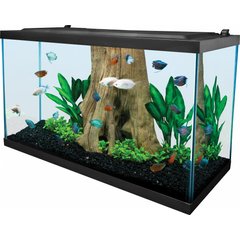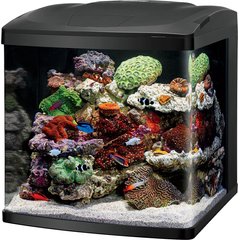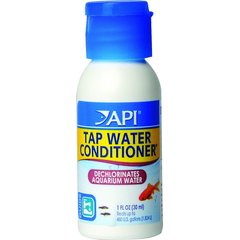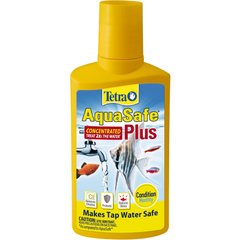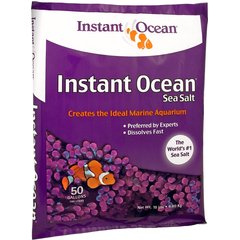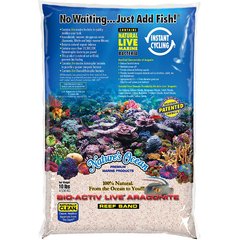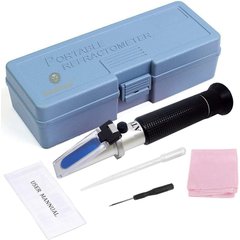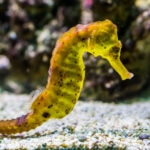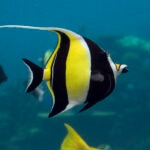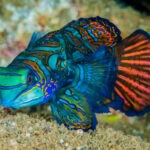How To Set Up a Saltwater Aquarium
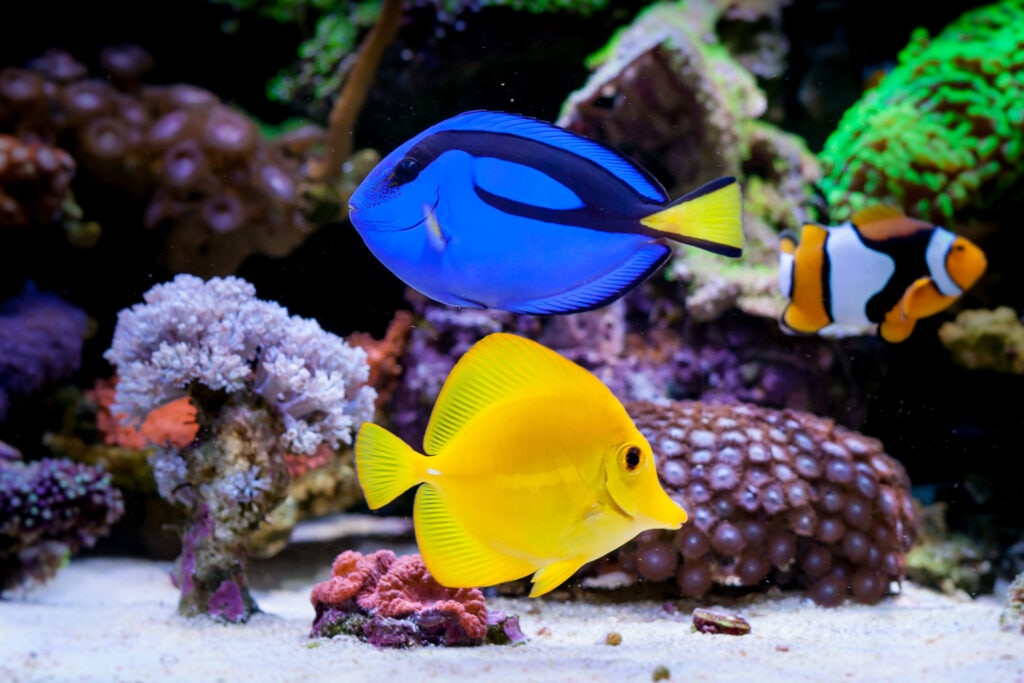
Photo by Tgordievskaya/iStock/Getty Images Plus
If you have kept a freshwater fish tank for a while, you may be thinking about adding a saltwater aquarium to your home.
Although there’s a learning curve, with some patience and work you can have a saltwater tank brimming with colorful new pets.
Key Takeaways
- Decide which saltwater fish you’d like to keep before planning the rest of the tank details.
- A 25- to 55-gallon tank will offer the best balance of water stability and ease of upkeep for your first saltwater aquarium.
- Make sure your new tank is fully cycled so beneficial bacteria are established before fully stocking your tank with fish.
What To Know Before Setting Up Your Saltwater Tank
Before shopping for everything you think you need for your saltwater tank, there are a few things you need to know.
Choose Your Fish First
Marine biologist Cherilyn Chin says it’s possible to set up the tank before you decide what fish to keep, but it’s usually a better idea to decide which saltwater fish you’d like to keep first and go from there. This way, you can keep the specific needs of your fish in mind when choosing the rest of your supplies.
For a beginner saltwater tank, Chin recommends sticking to fish-only tanks. The more corals and invertebrates you add to your tank, the more complicated maintenance gets. Advanced saltwater tanks can also accommodate shrimp, snails, live corals, and other marine life.
Matthew Hayes, content creator at Fish Shop Matt, has 20 years of experience in aquatics and says the best beginner fish are “tank-bred clownfish and small gobies like the neon goby or firefish … they’re hardy, adapt well to tank life, and don’t need special care compared to more sensitive species.” Other tank-raised fish available include cardinalfish, basslets, blennies, and even some pygmy angelfish.
He also says you should watch out for fish that are advertised as affordable beginner fish but can turn into bullies later. For example, damselfish are often sold as hardy fish to cycle a tank, but with a few exceptions they become very territorial and aggressive toward tank mates.
Select Your Aquarium
Hayes says a 25- to 55-gallon tank is ideal for beginners. “It offers more stable water conditions, which makes it easier to manage and less likely to have quick swings [in water conditions] that can harm fish,” he says.
Recommended Products
According to Chin, bigger tanks can make it easier to maintain the water chemistry, but they also mean larger water changes as part of general maintenance.
No matter how big or small your saltwater tank is, there needs to be enough room for the fish you want to keep.
Must-Have Saltwater Aquarium Supplies
Your first saltwater aquarium will need the following items:
- Power strip/surge protector
- Aquarium
- Aquarium stand
- Salt mix
- Dechlorinating solution
- Bacteria starter culture
- Reverse osmosis water filter system
- Hydrometer or refractometer
- Water chemistry test kits
- Substrate
- Decorations
- Live or dry rock
- Powerhead/wavemaker
- Filter
- Fish food
- Heater and thermometer
- Lights
- Maintenance tools such as buckets, hoses, nets, and algae scrapers
How To Set Up a Saltwater Fish Tank, Step by Step
Your saltwater fish tank setup doesn’t need to be complicated. If you’re new to saltwater aquariums, keeping the design simple makes it so much easier.
Test the Tank and Install Equipment
Before you do anything, clean the aquarium and test it—the last thing you need is to get everything set up and find out it has a crack.
Fill the tank up completely and place it somewhere safe for a couple of days before you install equipment. Once you are ready, place your tank in its permanent location and make sure it’s level. Now you can install the equipment—filter, powerheads, lights, heater, etc.
Fill With Saltwater (But Only Part Way!)
Use purified water that’s been through either a reverse osmosis (RO) or deionization (DI) process.
Tap water isn’t safe for aquatic pets because it usually contains chlorine and can contain heavy metals, nitrates, and phosphates that affect your water chemistry and ultimately harm your fish. If you must use tap water, use conditioning products like API Tap Water Conditioner or Tetra AquaSafe Water Conditioner to make it safe for your saltwater tank.
Mix the water with a salt mix made for saltwater aquariums in buckets before adding it to your aquarium, and only fill it 1/2 to 3/4 full.
Recommended Products
Add Substrate and Live Rock
Once your tank is partially full, add substrate and decorations. (Placing them now keeps you from splashing water everywhere.)
Live rock and aragonite sand are popular choices for substrate. Aragonite sand replicates the natural beauty of the ocean floor, and it also helps maintain the pH of your saltwater tank. Live rock or live sand helps jumpstart the nitrogen cycle.
Recommended Product
Finish Filling With Saltwater
Top off your tank with saltwater (dechlorinated water with salt mix) and use a hydrometer or refractometer to check the salinity.
Recommended Product
Cycle the Tank
When we talk about cycling your tank, we’re talking about the nitrogen cycle. This is the biological process that converts dangerous waste products like ammonia into less toxic compounds like nitrite, and eventually into nitrate.
While it is possible to cycle a tank using ammonia, you’ll generally see better results by adding a small number of hardy fish. This gives the bacteria found on live sand or live rock (as well as in the bacteria starter cultures) a food source, and they will grow to a level that can sustain the number of fish in the tank.
You’ll see ammonia rise, then fall while nitrite rises. Then the nitrite will drop and nitrate will form. When ammonia and nitrite are zero, the tank is cycled.
Water cycling takes about six weeks. But you should still slowly increase the number of fish, because every time you add more, the bacteria population will need to grow to support them.
Corals and invertebrates tend to be much more sensitive to ammonia and nitrite, and they shouldn’t be added till the tank is fully cycled.
Measure the Water Conditions
In addition to ammonia, nitrite, and nitrate, important water parameters to monitor include temperature, pH, and salinity. If you have a reef tank, you’ll also monitor calcium, alkalinity, and trace elements.
- The temperature should be around 78 F. The water temperature needs to be stable; make sure you have a heater or chiller to maintain the temperature.
- In a fish-only tank, pH can be between 7.8–8.5. Reef tanks should be in the 8.3–8.5 range. Like temperature, stability is critical here.
- Salinity should be maintained at 1.026 specific gravity, or 35 ppt.
- When doing a water change or adding fish, it’s important to match the tank’s temperature, pH, and salinity.
How To Introduce Fish to Your Saltwater Aquarium
How you add new fish to an established tank depends on the species, says Chin. Some are more sensitive than others, but you should keep them in a separate quarantine tank for two to four weeks to make sure they’re free of disease and parasites.
Once you’re satisfied that your fish are happy and healthy, slowly acclimate them to your main tank by gradually adding water from your existing tank to the quarantine tank. This process will help reduce stress and prevent the shock of moving from water with one level of salinity to another. Make sure the temperature, pH, and salinity of your quarantine tank match your main tank.
Maintaining Your Saltwater Tank Over Time
Taking care of your saltwater aquarium can be time-consuming, so set up a maintenance schedule to make sure you get everything necessary done.
- Check on your fish! Their behavior is often the first sign of something wrong in your tank. Stressed fish show symptoms such as labored breathing, listlessness, or scratching.
- Check equipment for leaks and problems.
- Inspect the mechanical filter and clean at least weekly; replace as needed.
- Perform 25% water changes (at least twice a month, for most tanks).
- Clean algae from the glass weekly.
- Test the water at least weekly (but daily is better in the beginning).
- Clean the salt creep (as the tank water evaporates, it leaves behind salt that can accumulate on surfaces).
- Clean the lenses on your lights.
- Empty and clean the skimmer collection cup every day or two
- Clean your aquarium equipment at least monthly.
Setting up and maintaining a saltwater tank takes more work than a freshwater aquarium, but the vibrant colors of marine animals and underwater landscapes make every moment worth it.
By planning ahead, choosing the right equipment, and exercising patience, you’ll set yourself up for long-term success. Start simple and be consistent with maintenance so you can enjoy your little slice of the ocean in your home.
FAQs About Saltwater Tank Setup
How long does it take to set up a saltwater tank?
Although you can physically put everything together in a few hours, cycling a new saltwater tank can take up to eight weeks.
What size saltwater tank is best for beginners?
Twenty-five to 55-gallon tanks offer the best balance of water stability and ease of upkeep. Tanks in this size range help prevent wide swings in water conditions.
Can I use tap water in a saltwater aquarium?
Yes, but only if you test it first and prepare it using dechlorination treatments. It’s safer to use reverse osmosis or bottled distilled water.
How much does it cost to maintain a saltwater aquarium?
The cost depends on several factors, including water treatments, food, type of fish, frequency of water changes, and electricity cost, but can range from $15 to $200 per month.
